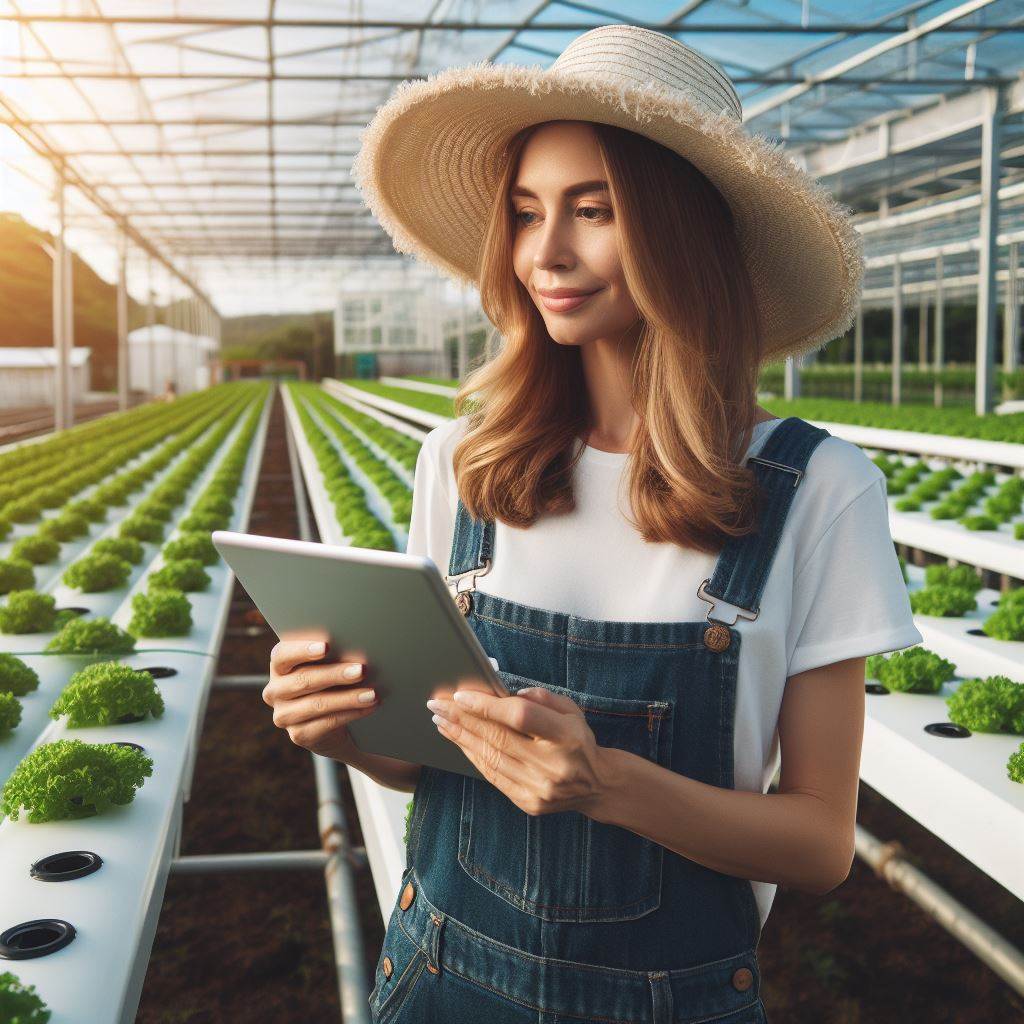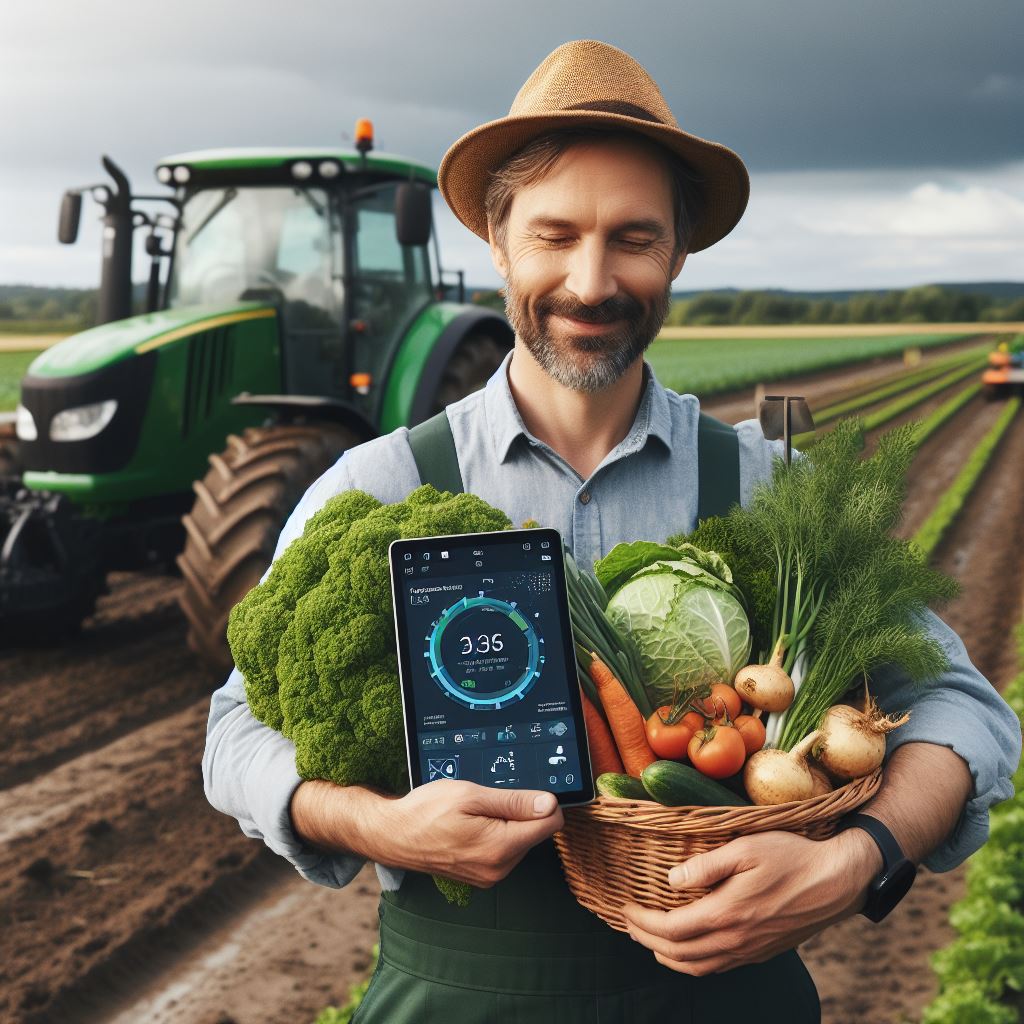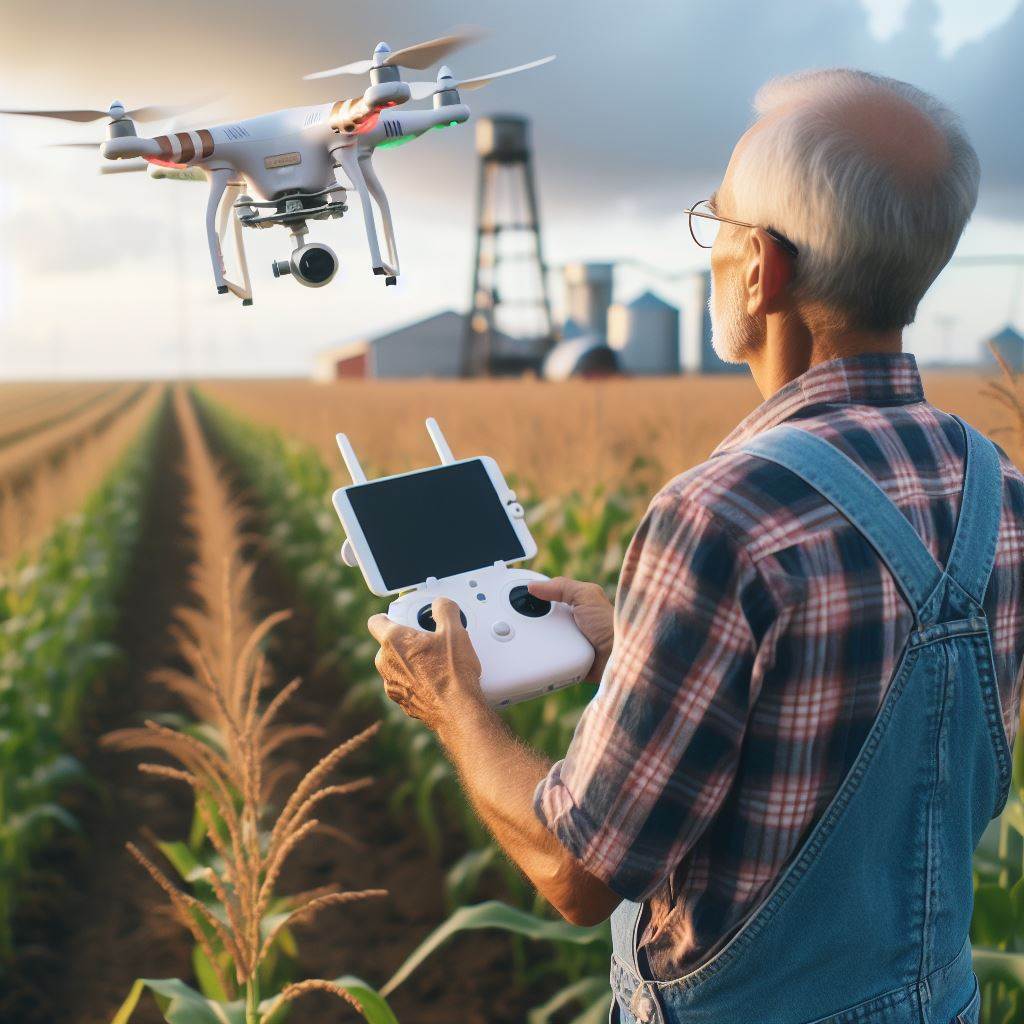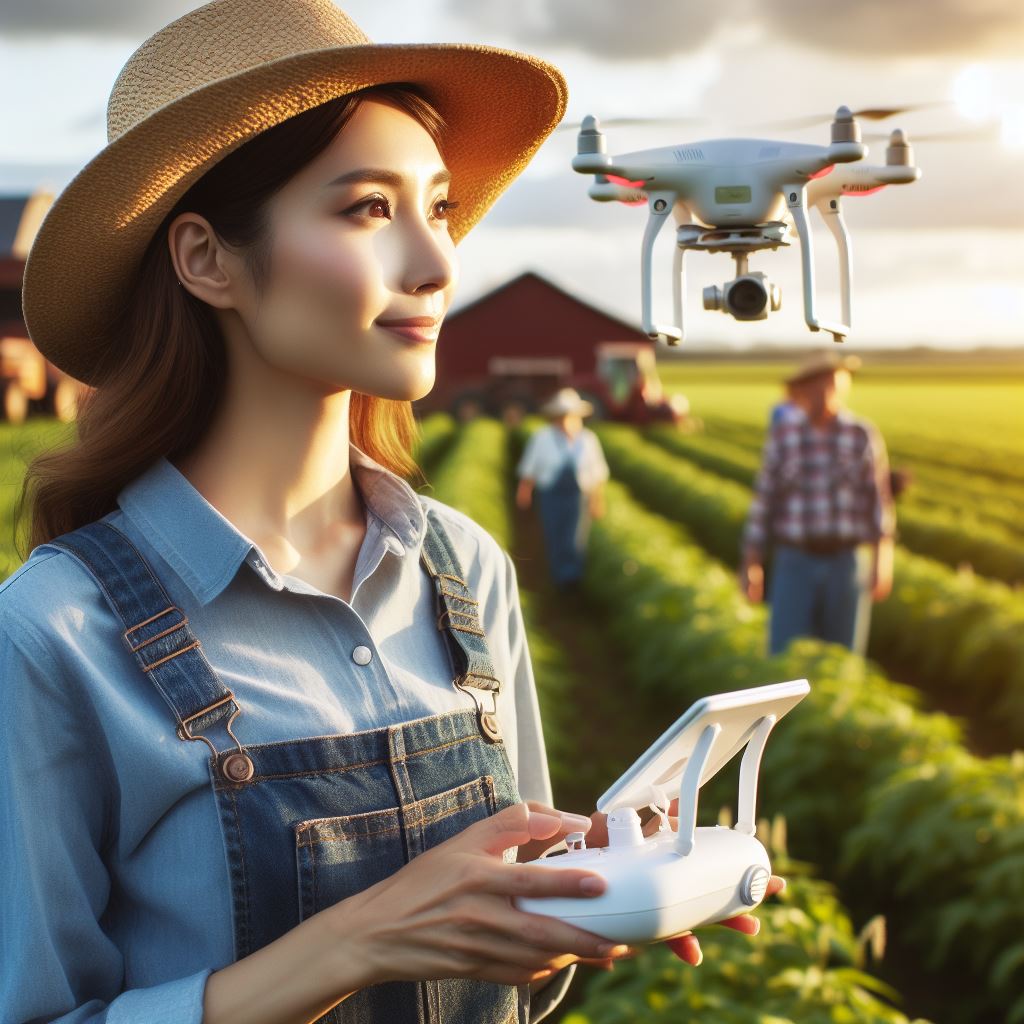Introduction
Drones have emerged as a groundbreaking technology in agriculture, enabling farmers to enhance their operations.
These unmanned aerial vehicles can be equipped with advanced sensors, cameras, and thermal imaging technology.
The adoption of drones in agriculture has led to improved crop monitoring and enhanced yield predictions.
Drones allow farmers to assess plant health, identify nutrient deficiencies, and detect pest infestations early on.
By collecting precise data, drones enable farmers to make informed decisions, optimizing crop management practices.
With their ability to cover vast areas quickly, drones save time and reduce labor costs significantly.
Crop spraying is another area where drones have transformed conventional farming practices.
Drones can precisely target specific areas, reducing the use of chemicals and ensuring more effective pest control.
These flying machines have also greatly revolutionized the field of precision agriculture.
Drones provide farmers with the ability to create detailed 3D maps and monitor crop progress throughout the growing season.
The data collected by drones can be further analyzed to identify patterns and make data-driven decisions.
In summary, drones have revolutionized the agriculture industry by streamlining farming processes and increasing efficiency.
The application of drones in agriculture has not only improved crop management but also minimized environmental impact.
As technology continues to advance, drones are likely to play an increasingly significant role in shaping the future of agriculture.
Overview of drones in agriculture
Brief history of drone use in agriculture
- Drones have been used in agriculture since the early 1990s for crop monitoring and spraying.
- Initially, these drones were simple remote-controlled helicopters or fixed-wing aircraft.
- With advancements in technology, drones became more efficient, affordable, and accessible to farmers.
Definition of agricultural drones and their key features
- Agricultural drones, also known as UAVs (Unmanned Aerial Vehicles), are unmanned aircraft specifically designed for farm applications.
- They are equipped with various sensors, cameras, and data analysis software to collect and analyze agricultural information.
- Key features include GPS navigation, autonomous flight, real-time data transmission, and the ability to carry out precision spraying.
Statistics on the growth and impact of drones in the farming sector
- The global agricultural drone market is projected to reach $5.19 billion by 2025, with a compound annual growth rate of 38.6%.
- Drones have transformed farming practices by providing farmers with accurate and timely data for decision-making.
- They enable farmers to monitor crop health, detect pests and diseases, assess soil conditions, and optimize irrigation.
- By identifying problem areas early, drones help reduce crop losses and increase overall productivity.
- Drones also facilitate precision agriculture, allowing targeted spraying of fertilizers and pesticides, minimizing environmental impact.
- According to a study, drones can reduce pesticide use by up to 30%, resulting in cost savings and improved sustainability.
- Additionally, drones save time and labor as they can cover larger areas in a shorter time compared to traditional methods.
- In the United States, the Federal Aviation Administration estimates that agricultural drones could account for 80% of all commercial drone use.
Therefore, drones have revolutionized the agricultural sector with their innovative capabilities.
Transform Your Agribusiness
Unlock your farm's potential with expert advice tailored to your needs. Get actionable steps that drive real results.
Get Started
From their humble beginnings as remote-controlled aircraft, they have evolved into advanced UAVs.
Equipped with sensors and data analysis software, agricultural drones provide valuable insights for farmers.
The market for these drones is growing rapidly, and their impact on farming practices is significant.
They improve efficiency, reduce costs, and promote sustainable farming methods.
As drones continue to advance, we can expect further innovations and increased adoption in agriculture.
With their potential to revolutionize crop management, drones are truly changing the face of agriculture.
Read: Agri-Tech and Big Data: Transforming Farm Management
Benefits of using drones in agriculture
Increased efficiency and productivity
Using drones in agriculture improves efficiency by enabling farmers to quickly and easily monitor their crops.
Drones can cover large areas in a short amount of time, reducing the manual labor required for field inspections.
The real-time aerial view provided by drones helps farmers identify issues like pest infestations, water stress, or nutrient deficiencies, allowing for timely intervention.
By detecting problems early, farmers can take appropriate measures to mitigate crop damage and increase overall productivity.
Cost reduction and savings
The use of drones in agriculture has the potential to significantly reduce costs for farmers.
Traditionally, farmers had to rely on manual labor or expensive machinery for activities like crop scouting and monitoring.
With drones, these tasks can be accomplished more efficiently and at a fraction of the cost.
Furthermore, by identifying specific areas that require attention, farmers can optimize the use of valuable resources such as fertilizers and pesticides, leading to further cost savings.
Improved data collection and analysis
Drones equipped with high-resolution cameras and other sensors can collect vast amounts of data about crops and field conditions.
This data can then be analyzed using advanced algorithms to gain valuable insights into plant health, growth patterns, or soil quality.
By leveraging this information, farmers can make informed decisions regarding irrigation, fertilization, and other agronomic practices.
The ability to gather precise data quickly and accurately allows for proactive and targeted actions, leading to optimized crop management.
Environmental benefits
- The use of drones in agriculture can contribute to significant environmental benefits.
- In the past, crop monitoring often required heavy machinery, resulting in soil compaction and damage to crop rows.
- Drones, on the other hand, fly above the fields without causing any physical disturbance, minimizing soil erosion and compaction.
- Additionally, drones enable farmers to use precise application techniques, targeting specific areas only when necessary.
- This targeted approach reduces the overall use of agrochemicals, minimizing potential environmental pollution.
- Moreover, drones can aid in wildlife and ecosystem monitoring, helping farmers identify and address issues related to biodiversity and conservation.
Basically, the deployment of drones in agriculture offers numerous benefits, ranging from increased efficiency and productivity to cost reductions and environmental advantages.
By harnessing the power of aerial data collection, farmers can make informed and precise decisions, leading to improved crop management and sustainable practices.
Read: Future of Farming: AI and Machine Learning in Agri-Tech
Application of drones in different farming processes
Drones, also known as unmanned aerial vehicles (UAVs), are transforming the agricultural industry through various innovative applications.
These advanced technologies are revolutionizing traditional farming practices by providing farmers with valuable data and automation capabilities.
Let’s explore the different processes in which drones are being applied in agriculture.
Showcase Your Farming Business
Publish your professional farming services profile on our blog for a one-time fee of $200 and reach a dedicated audience of farmers and agribusiness owners.
Publish Your ProfileCrop monitoring and management
Aerial imaging for crop health assessment
Drones equipped with high-resolution cameras can capture detailed aerial imagery of crops.
This imagery can be used to assess crop health, detect diseases, identify nutrient deficiencies, and evaluate overall plant growth.
Farmers can obtain real-time information about their crops and make timely decisions to optimize yields.
Precision spraying of fertilizers and pesticides
Drones can precisely spray fertilizers and pesticides over crops.
With the help of advanced sensors and GPS technology, they can identify specific areas that require treatment.
This targeted approach minimizes chemical wastage, reduces environmental impact, and improves overall crop health.
Livestock management
Herd monitoring and tracking
Drones equipped with thermal cameras and GPS systems can monitor and track livestock.
Farmers can gather valuable data about the location, behavior, and movement patterns of their animals.
This information helps in managing and protecting livestock, preventing theft, and ensuring their well-being.
Livestock health assessment
Drones assist in assessing the health of livestock by capturing high-resolution imagery.
This allows farmers to identify early signs of diseases, injuries, or abnormalities in the animals.
Early detection enables prompt treatment, reducing the spread of diseases and improving the overall health of the herd.
Planting and seeding
Automated seeding and transplanting
Drones can automate the process of seeding and transplanting crops.
They can accurately drop seeds or seedlings at desired locations, ensuring optimal spacing and coverage.
This eliminates the manual labor required for these tasks, saving time and increasing efficiency.
Global positioning and precision planting
Drones equipped with GPS technology can precisely navigate fields and plant crops at precise locations.
This ensures consistent spacing between plants, reduces seed wastage, and improves crop uniformity.
Farmers can achieve higher crop yields and better utilize their land.
Irrigation and water management
l-time water monitoring
- Using advanced sensors, drones can monitor soil moisture levels and water usage in real-time.
- They collect data about specific areas of the field that require irrigation, allowing farmers to optimize water usage and reduce wastage.
- This promotes efficient water management practices and conserves valuable resources.
Automated irrigation systems
- Drones can work in tandem with automated irrigation systems.
- They can control the irrigation process based on data collected from sensors and aerial imagery.
- By providing precise water application, farmers can ensure that crops receive the right amount of water at the right time, thereby maximizing productivity.
Ultimately, drones are revolutionizing agriculture by providing farmers with innovative tools for crop monitoring, livestock management, planting, and water management.
These technological advancements enable farmers to make data-driven decisions, optimize resource utilization, and enhance overall productivity.
As the agri-tech industry continues to evolve, drones are expected to play an increasingly crucial role in transforming the way we produce food.
Read: Drones in Agri: Boosting Crop Efficiency
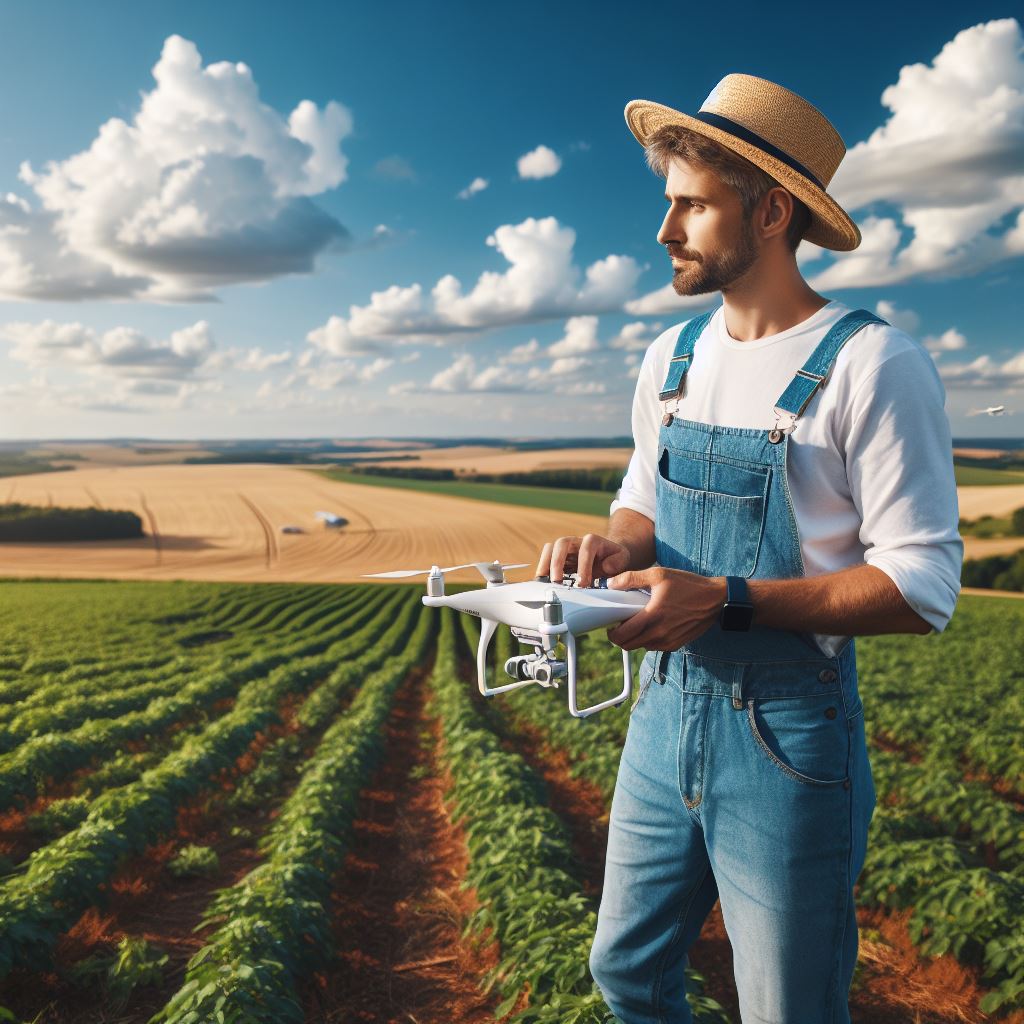
Case studies and success stories
Examples of farms or companies utilizing drones effectively
- FarmTech Innovations: This agricultural company uses drones to monitor crop health and optimize irrigation schedules.
- GreenFields Farm: The farm utilizes drones to survey land, detect pest issues, and accurately apply pesticides.
- HarvestPro Company: Drones are employed to collect data on soil health, allowing for targeted nutrient application.
- AgriDrone Solutions: This company offers drone services for crop monitoring, allowing farmers to make informed decisions.
Positive outcomes achieved through the use of drones
- Increased efficiency: Farms using drones experience significant time and cost savings by automating various tasks.
- Enhanced crop management: Drones provide real-time data on plant health, facilitating timely interventions and reducing crop losses.
- Precision agriculture: By using drones, farmers can apply fertilizers and pesticides only where needed, minimizing environmental impact.
- Improved safety: Drones eliminate the need for manual labor in hazardous tasks like surveying steep terrains or inspecting tall structures.
- Higher yields: With better monitoring and targeted interventions, farmers can achieve higher crop yields and optimize resource usage.
- Reduced resource waste: Drones help farmers optimize water and fertilizer usage, minimizing waste and preserving natural resources.
- Early disease detection: Drones equipped with sensors can identify early signs of plant diseases, allowing farmers to implement preventive measures.
- Sustainable practices: By employing drones, farms can reduce their carbon footprint by minimizing chemical usage and improving resource efficiency.
- Cost-effective surveillance: Drones provide a cost-effective way to monitor large fields, reducing the need for manual labor and equipment.
- Increased data accuracy: Drones capture high-resolution imagery and collect precise data, enabling farmers to make informed decisions.
These case studies and success stories demonstrate the effectiveness of drones in revolutionizing agriculture.
From optimizing crop management to improving resource efficiency, drones have proved to be a game-changer for the industry.
Farms and companies that integrate drone technology into their operations enjoy a range of benefits, including increased efficiency, higher yields, and improved sustainability.
By harnessing the power of drones, agriculture is transitioning towards a more productive, sustainable, and technologically advanced future.
Read: Drones: Transforming Agricultural Practices
Challenges and limitations of drone technology in agriculture
Legal and regulatory restrictions
- Drone usage in agriculture is subject to strict rules and regulations.
- Many countries have limitations on drone flight altitude and proximity to populated areas.
- Drones are required to operate within visual line of sight, limiting their reach.
- Obtaining permits and licenses can be a time-consuming and bureaucratic process.
- Violating regulations can lead to penalties and legal consequences for farmers and operators.
Initial investment costs and affordability
- Purchasing agricultural drones can be a significant financial burden for farmers.
- The cost of high-quality drones equipped with advanced sensors and cameras is expensive.
- Additional costs include software, training, maintenance, and insurance.
- Small-scale farmers may find it challenging to allocate funds for such investments.
- Affordability and return on investment become critical factors for adoption and implementation.
Limited battery life and flight endurance
- Most agricultural drones have a limited battery life, typically ranging from 20-40 minutes.
- This limitation restricts their ability to cover vast agricultural areas in a single flight.
- Recharging or replacing batteries during operations can disrupt workflows and decrease efficiency.
- Improving battery technology to extend flight endurance is a crucial area of development.
- Longer flight times would enhance the productivity and effectiveness of agricultural drone operations.
Lack of skilled operators and training
- The proper operation and navigation of agricultural drones require specialized skills.
- Farmers and operators need to acquire knowledge in drone technology and its applications.
- Training programs and courses on drone operation and maintenance are essential.
- Building a skilled workforce is crucial to maximize the potential of drone technology in agriculture.
- Investment in training and education is necessary to ensure safe and effective drone operations.
Future prospects and advancements in drone technology
Emerging trends and developments
- Automation: Drones are becoming increasingly autonomous, reducing the need for manual control.
- Enhanced data collection: Advanced sensors and cameras on drones gather precise information about crops.
- Improved battery life: Longer flight times allow drones to cover larger areas and increase efficiency.
- Swarming capabilities: Multiple drones can work together, optimizing agricultural tasks and enhancing productivity.
- Improved durability: Drones are being designed to withstand harsh weather conditions and tough environments.
Integration with artificial intelligence and machine learning
- Intelligent decision-making: Drones can analyze data in real-time using AI algorithms, leading to better crop management.
- Disease and pest identification: AI can help drones detect and identify plant diseases and pests, allowing for targeted treatment.
- Yield prediction: Drones integrated with machine learning algorithms can predict crop yields based on data analysis and historical patterns.
- Precision agriculture: AI-powered drones can provide farmers with precise recommendations for irrigation, fertilization, and pesticide use.
Potential impact on the future of agriculture
- Increased efficiency: Drones can cover large areas quickly, reducing the time and effort required for traditional manual inspections.
- Cost savings: Automation and precision agriculture techniques can optimize resource usage, reducing wastage and expenses.
- Crop monitoring and management: Drones provide real-time data on plant health, enabling proactive decision-making.
- Environmental benefits: With precise application of resources, drones help minimize chemical usage, reducing environmental impact.
- Sustainable farming practices: Drones enable farmers to adopt sustainable techniques, reducing water and chemical usage.
- Increased yields: By identifying and addressing crop issues at an early stage, drones can help maximize agricultural productivity.
- Enhanced safety: Drones eliminate the need for farmers to physically inspect hazardous areas or climb tall structures.
- Accessibility: Drones make it easier for farmers in remote or difficult-to-reach areas to monitor and manage their crops.
- Technological advancements: Continuous developments in drone technology can lead to new applications and further improvements.
To sum it up, the future of agriculture looks promising with the rapid advancements in drone technology.
Emerging trends such as automation, improved data collection, integration with AI and machine learning, and potential impacts on efficiency, cost savings, and sustainability are transforming the agricultural landscape.
Drones are revolutionizing the way farmers manage their crops, enabling proactive decision-making and optimizing resource usage.
With further advancements, drones have the potential to significantly enhance agricultural productivity and contribute to the development of a more sustainable and efficient farming industry.
Conclusion
We’ve delved into the revolutionary impact of drones on modern agriculture. These unmanned aerial vehicles redefine farming practices, optimizing efficiency and precision.
Throughout our exploration, it became evident that drones offer real-time data, transforming decision-making for farmers.
Their role extends beyond surveillance; drones are integral to crop monitoring, disease detection, and yield enhancement.
This technological leap translates into increased productivity, resource conservation, and sustainable farming.
As we reflect on the strides made, it’s clear that drones have become indispensable tools for the contemporary agriculturist.
The marriage of innovation and agriculture propels us into a future where efficiency, sustainability, and productivity harmoniously coexist.
In closing, drones signify not just a technological advancement but a fundamental shift in how we cultivate the land, ensuring a brighter, more sustainable future for agriculture.

